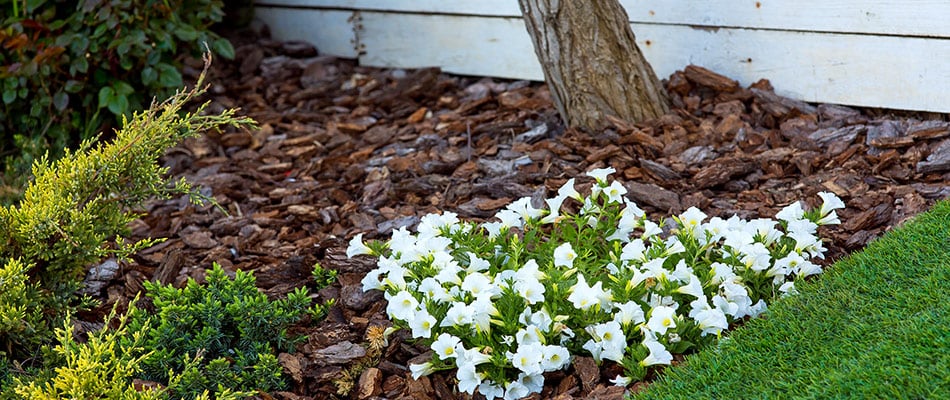
Your Guide for Choosing Landscaping Stone vs. Mulch
Great landscapes exist in layers. From the top of the tallest shade tree to the grass or groundcovers beneath our feet, the ideal backyard getaway comes together when all areas of the landscape work in harmony.
All plants start at the ground level. To put them in a position to succeed, we often think of the obvious - soil, fertilization and water.
Like those things, mulching has a great deal to say about the health and longevity of your gardens. And like all things in the landscape, there are a multitude of mulches to choose from.
These days, stone mulching is gaining popularity, especially in xeriscaped or other modernist designs.
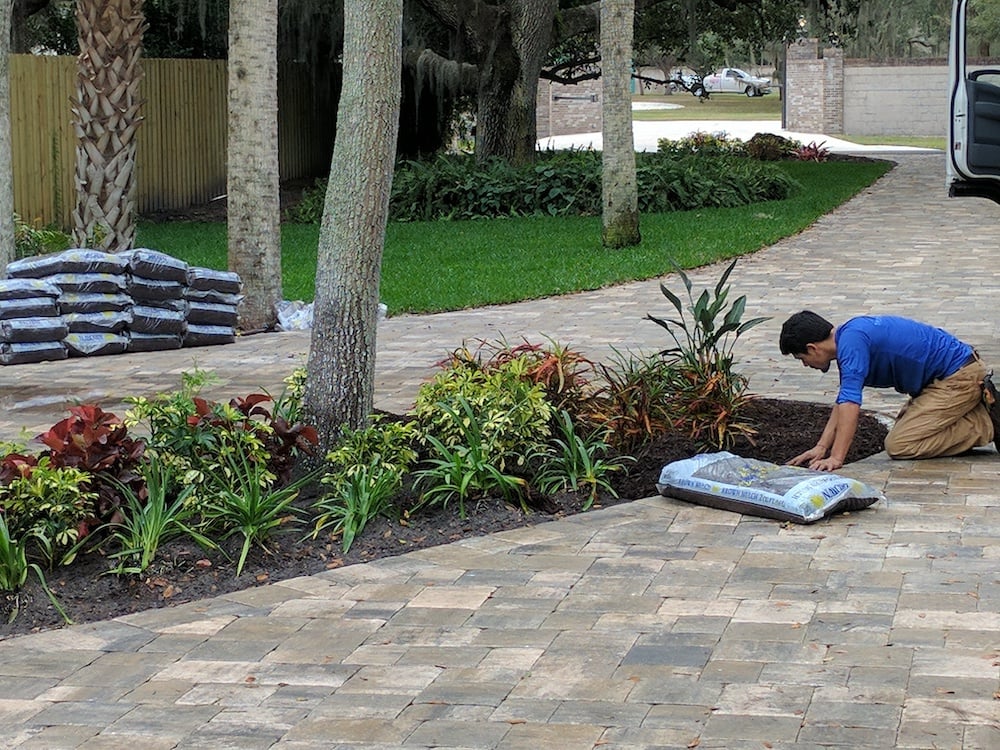
If you’re thinking about putting mulch or rocks around your home, give consideration to these common landscape questions.
1. Planting Plants? Don’t use stone.
There are many ways to put a finishing touch on your gardens and planting beds. Shredded hardwood mulch is the classic, and for good reason.
Shredded wood mulches provide color and uniformity in the landscape, and are relatively easy to apply and reapply as needed.
Versatile as wood mulch is, its popularity can best be explained by the benefits it provides for plants of all types.
Shredded hardwood mulch retains moisture and provides a buffer around the root zone of your trees, shrubs and perennials. In direct sunlight and summer heat, this insulating layer protects surface roots from exposure. In colder months, the same insulating effect helps to keep roots at a stable temperature, even if the air becomes cold.
And as mulch ages out and breaks down, it returns organic material to the planting area.
Filling your planting bed with rocks or gravel creates a uniform look and has a style all its own. As for your plants, even the best stone for flower beds isn’t all that great. Rocks trap heat and dissipate water, and because they don’t break down, organic material is never returned to the soil.
That means increased watering and fertilization just to give your plants a puncher’s chance of surviving, let alone thriving.
Unless your plants are suited for the desert, filling the beds around your house with stone will do them no favors.
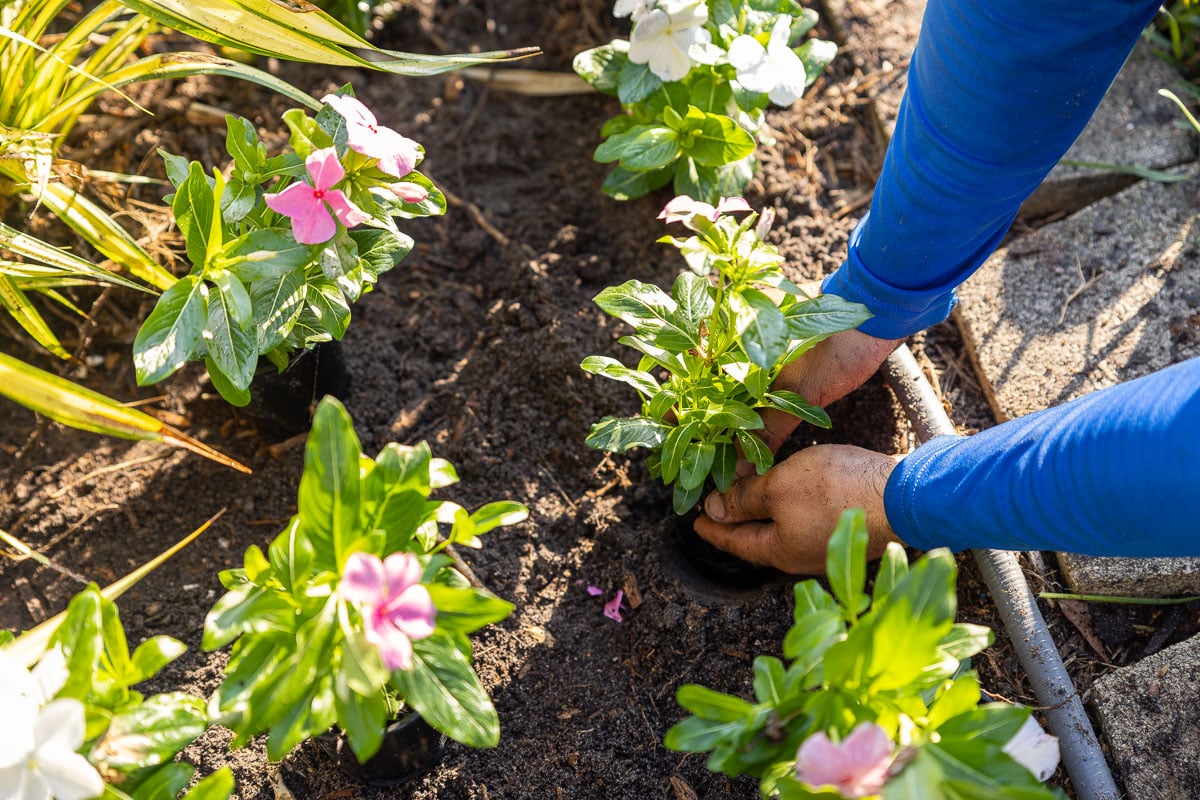
2. Beating Back Weeds? Don’t use stone.
The big idea behind filling planting beds with rock or stone is weed suppression. Because these stones are inorganic, weeds won’t find a place to make themselves at home.
That’s the goal, anyway.
Unfortunately, some weeds need only a crack in concrete to take root. A few inches of river rock or crushed stone are no match.
Like stone, mulch can help to prevent sunlight from reaching weed seeds. Either is better than bare soil. But, like mulch, stones can’t prevent all weeds.
Hand-weeding a rock bed is a time-consuming and painful endeavor. Controlling weeds in these beds requires a great deal of herbicide or a great deal of labor. Landscape fabric may help prevent river rock from sinking into the soil, but given a little time, weeds will grow atop the fabric, too.
Filling your planting beds with rocks is a bit like filling them with cracked concrete, for all the benefit that stone brings to your plants. And if weed suppression is the goal, a dense planting bed full of appealing perennials and shrubs is a much more pleasing way to crowd out weeds than starving the ground with beds full of stone.
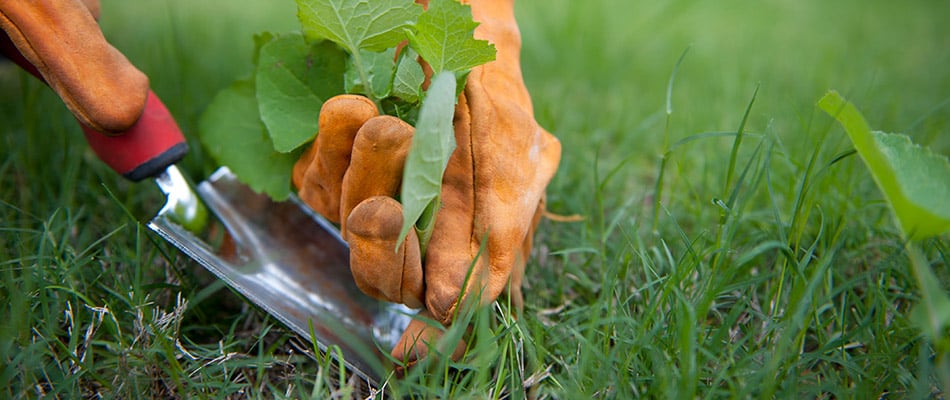
3. Cooling Off the House? Don’t use stone.
Foundation planting beds provide great passive cooling for homes. Combinations of large shade trees and understory plantings can help to cool the soil and the air near your home.
Finding ways to keep cool in Sarasota summers is no small task. Instead of cranking up the air conditioner, let your planting beds do some of the work.
Air temperatures above turf, groundcovers and dense beds of shrubs and perennials are far cooler than the air above non-green spaces. Cover them with dappled shade during the day, and now your landscape is doing all the heavy lifting of keeping the house cool.
If you’re weighing mulch or rocks around your house, consider that stone not only fails to cool the air above it - it actually traps and magnifies heat.
Stone beds are a bit like paved surfaces, albeit uneven. They trap heat and radiate it back into the air. Near your home, that increases temperatures just where you want them cooled. That heat also goes into the ground, where more regulated temperatures are beneficial to any plants you may have.
Vast areas of mulch with no plantings are not great for heat dissipation on their own. A dark, dyed mulch increases ambient air temperatures, too.
Covered in plants, however, mulch temperatures can be regulated and the air near your home and outdoor gathering spaces will be more pleasant as a result.
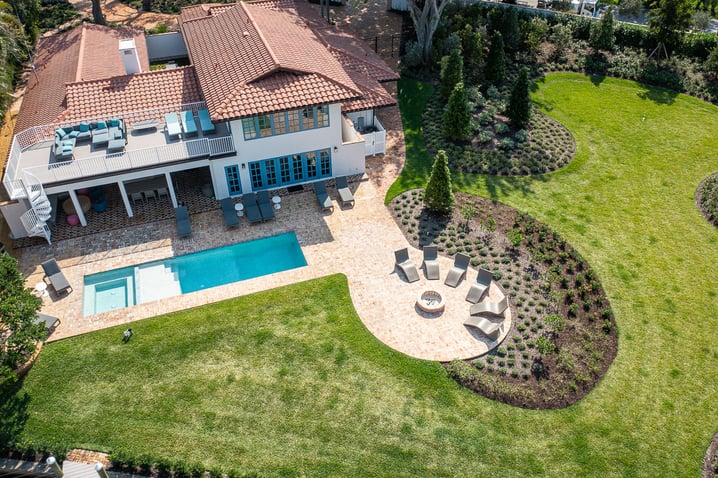
4. Reducing Watering & Fertilization? Don’t use stone.
Stone planting beds are considered the low-maintenance alternative to mulch.
However, if you intend to keep plants alive in these beds, consider your maintenance needs doubled.
Shrubs planted in stone beds have no organic material reaching the roots that isn’t applied directly to them. For these plants to have the nutrients they need to thrive, fertilization needs are much greater than they would be for plants in beds of wood mulch.
In fact, monthly fertilization and feeding is the reasonable schedule for stone planting beds. That’s double the fertilization rate for many plantings in mulch beds.
And, just like rocks and stone will not retain nutrients or organic matter, nor do they retain water.
Plantings in stone beds require more frequent and heavier watering than those in mulch. Where mulch helps to retain moisture, stone will speed evaporation by overheating the soil. In extremely hot and dry stretches, watering the stone itself may be the only way to keep those areas cool.
Stone beds may seem like the low-maintenance alternative to annual mulching, but greater plant care needs will quickly eclipse those savings.
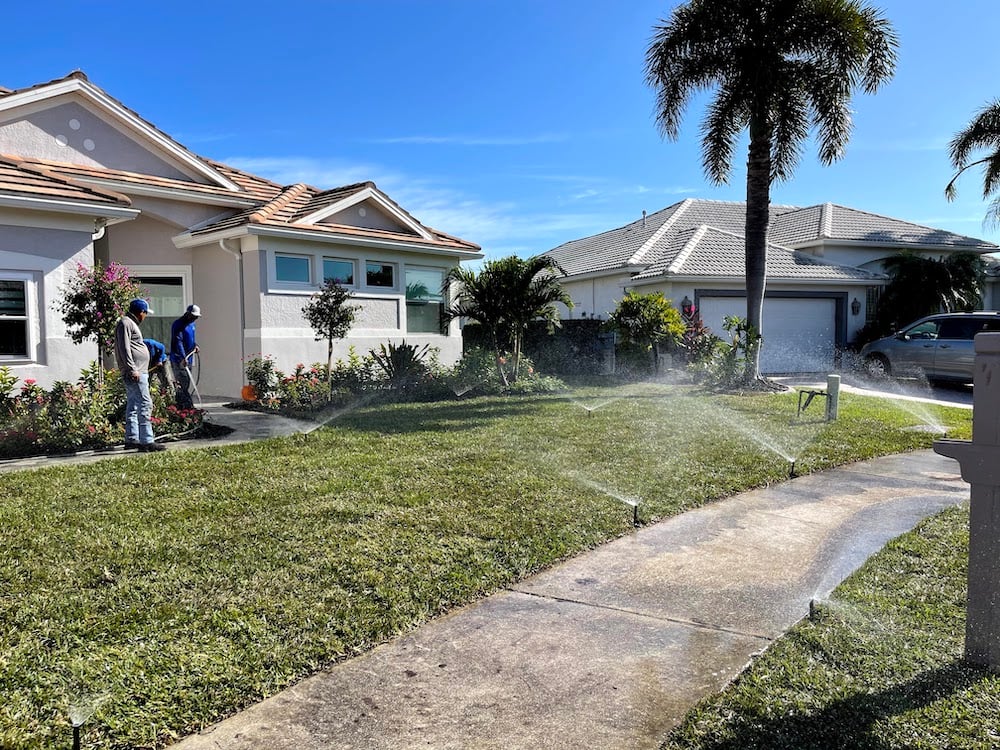
5. Looking for Alternatives to Concrete? It’s time for stone.
Whether for the aesthetics of xeriscaping or the perceived savings on maintenance time, stone and gravel beds are making their way into many landscapes.
Fortunately, there is a place for stone and gravel.
Gravel beds are a great way to provide surface drainage in areas where turf and mulch are routinely washed out. In island planting areas near roadways and other pavement, they can be a true low-maintenance alternative where grasses and plants would be too cooked to survive.
If you don’t mind the weeding, an island area with gravel or stone can help to clean up areas of the landscape that are hard to manage and will never be mistaken for focal points. Crushed stone is also a great, low-cost alternative to pavers or concrete for walkways and walking paths.
If this all sounds like an argument against xeriscaping, consider the whole picture of your landscape. If you’re willing to fill your yard with truly drought-tolerant plantings in order to save money and resources on water and fertilization, gravel beds are a key component of proper xeriscaping.
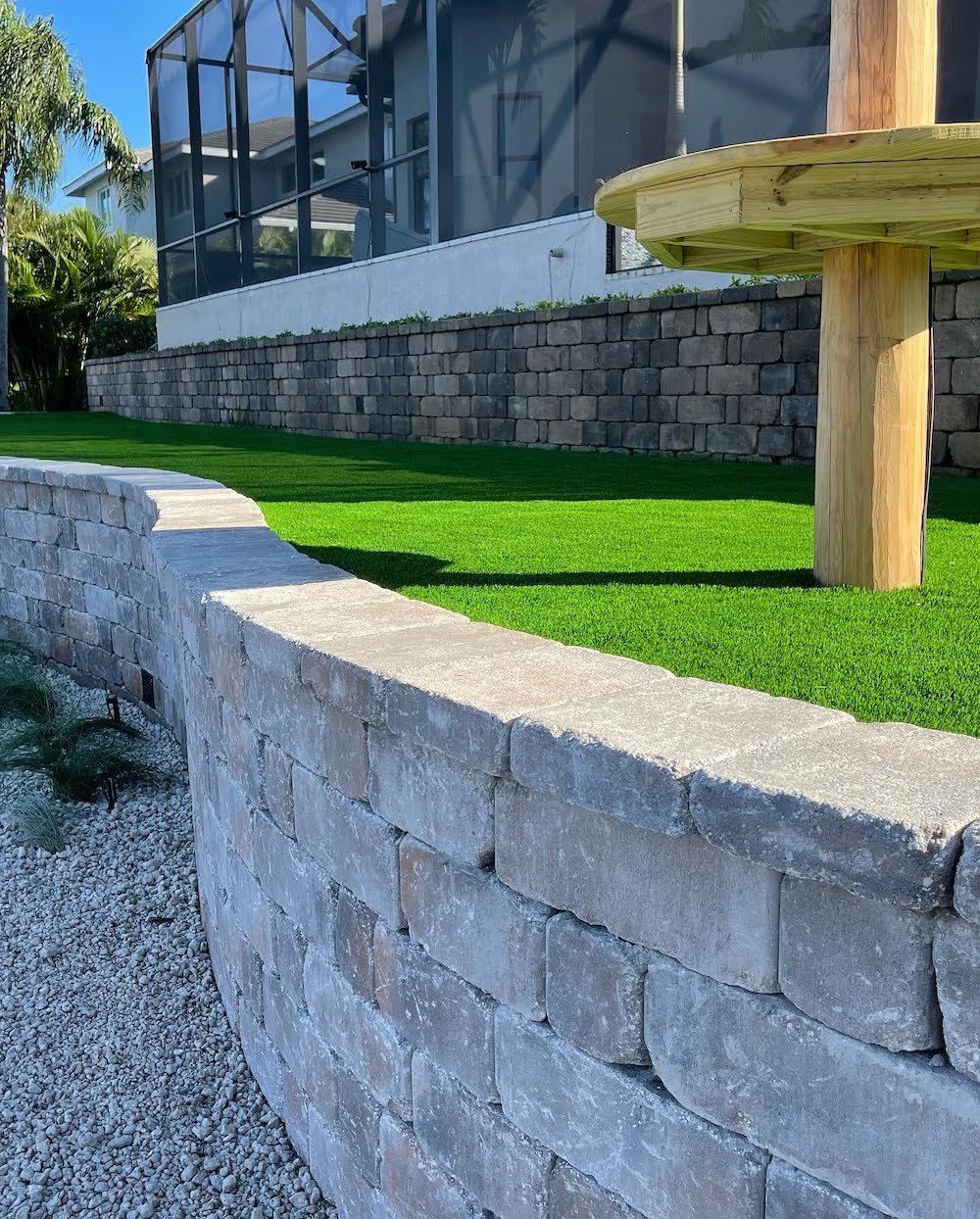
Is Mulch Around My House Truly My Only Option?
The expression ‘right plant, right place’ is a guiding principle in modern landscape design.
Beyond plants, all elements of the landscape, including mulch and stone bedding material, have to be in the right place in order to be effective.
If you’re considering mulch or stone for your beds, consider the places in the landscape where you intend to put them. Rocks and stone have their place, but if planting is a part of your program, go with the material that is conducive to the health and well-being of your plants.
Our designers can tell you exactly where mulch and stone are appropriate, and can select the right materials for your planting beds.

Reach out to us today and we’ll help you find the right materials for every place in your Sarasota landscape.


